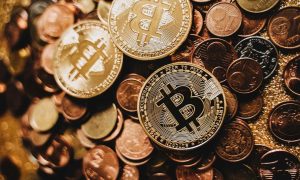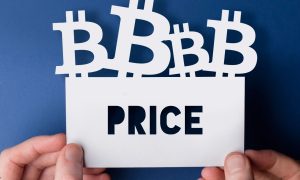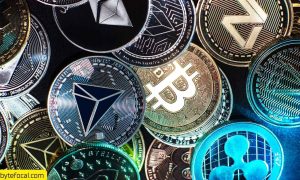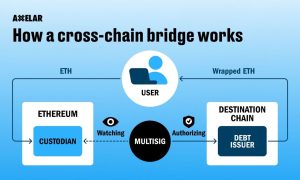Gold has captivated humanity for thousands of years. Its scarcity and inherent value have made it a reliable store of wealth across civilizations. Yet traditional gold investments come with limitations. Storage costs, verification challenges, and minimum purchase requirements create barriers for many potential investors. The digital age brings a solution to these age-old problems. Blockchain technology now offers innovative ways to own and trade gold. This revolution arrives in the form of gold tokenization. The marriage between precious metals and blockchain opens doors previously locked to average investors. Gold tokenization represents a significant shift in how we interact with this timeless asset. No longer do investors have to deal with physical storage concerns or hefty minimum investments. The world of gold ownership transforms through digital innovation while maintaining the security investors expect.
What is Gold Tokenization?
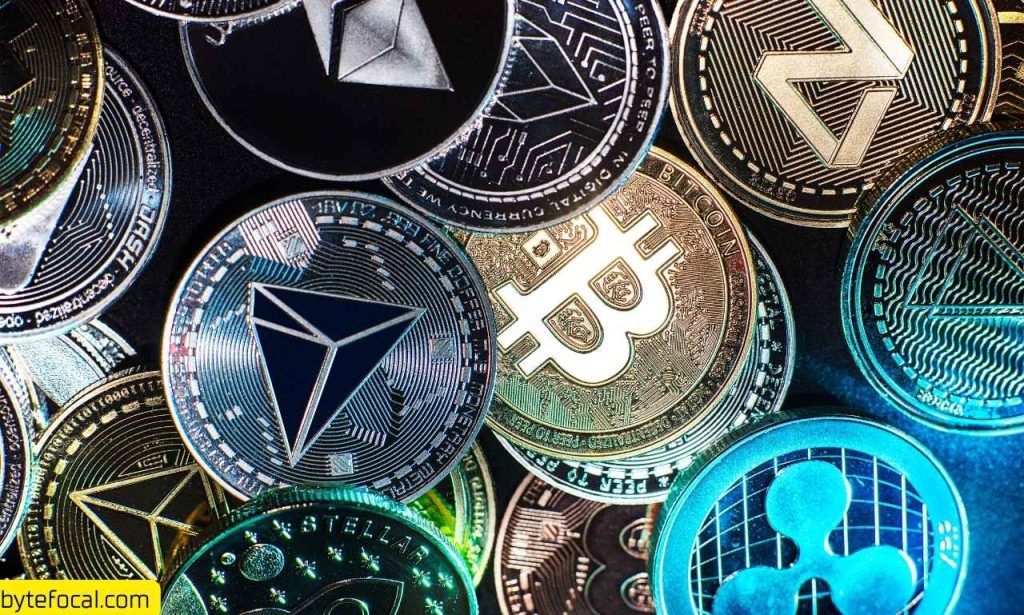
Gold tokenization converts physical gold into digital tokens on a blockchain network. Each token represents ownership of specific gold amounts stored in secure vaults. These tokens can be bought, sold, or transferred like other digital assets. The physical gold remains safely stored while ownership rights move freely through digital channels.
The process begins with a company purchasing and storing physical gold in secure facilities. Independent auditors regularly verify these gold reserves. The company then issues blockchain tokens representing this gold. Each token typically equals one gram or one ounce of gold.
Owners can trade these tokens on cryptocurrency exchanges or specialized platforms. The tokens maintain value based on the current gold price. Depending on the platform, token holders may even redeem their digital assets for physical gold. This system combines the stability of gold with the flexibility of digital currencies.
Benefits of Gold Tokenization
Enhanced Liquidity
Traditional gold suffers from liquidity constraints that discourage many investors. Selling physical gold often involves finding buyers, negotiating prices, and arranging secure delivery. This process can take days or weeks depending on market conditions. Transaction costs further eat into potential profits.
Gold tokenization transforms this experience completely. Tokenized gold trades around the clock on digital platforms. Investors can buy or sell their holdings instantly without waiting for business hours. The global nature of these platforms connects buyers and sellers worldwide.
Token holders enjoy immediate access to their assets’ value. They can liquidate positions within minutes rather than days. This liquidity makes gold more practical for short-term trading strategies. Investors no longer need to choose between stability and accessibility when selecting assets for their portfolios.
Greater Transparency and Accountability
Trust issues plague traditional gold investments. Investors must rely on third parties regarding purity, storage conditions, and actual reserves. History shows numerous cases where gold investments lacked proper backing. These concerns create hesitation among potential investors.
Blockchain technology addresses these worries through immutable records. Gold tokenization platforms publish regular audit reports on their physical reserves. Smart contracts ensure that each token maintains proper backing by actual gold. This transparency builds confidence in the system.
The blockchain keeps a permanent record of all transactions. Anyone can verify ownership histories and current holdings. Leading platforms employ independent auditors to verify their gold reserves regularly. These accountability measures exceed what’s possible in traditional gold markets.
Increased Accessibility
High entry barriers have historically limited gold investment to wealthy individuals and institutions. Traditional gold purchases often require significant minimum investments. Additional costs for storage, insurance, and verification further restrict accessibility. These factors put gold beyond reach for many potential investors.
Gold tokenization dramatically lowers these barriers. Investors can purchase fractions of tokens representing minimal gold amounts. Some platforms allow investments starting at just a few dollars. This fractional ownership opens gold markets to virtually anyone with internet access.
Geographic limitations disappear with tokenized gold. Investors worldwide can access these assets regardless of local gold market conditions. The digital nature of tokens eliminates physical transportation concerns. This accessibility democratizes gold investment in unprecedented ways.
Greater Efficiency
Traditional gold transactions involve multiple intermediaries and paperwork. Buyers and sellers must navigate complex processes for verification and transfer. Settlement periods often extend for days. These inefficiencies increase costs and frustrate market participants.
Gold tokenization streamlines the entire process through smart contracts. These self-executing programs automatically verify and complete transactions. Settlement happens within minutes instead of days. The elimination of unnecessary intermediaries reduces overhead costs significantly.
Record-keeping becomes automatic and error-free on the blockchain. Ownership transfers require no manual documentation. This efficiency extends to storage and security costs, which spread across all token holders. The result is a more affordable and frictionless gold investment experience.
Integration and Use Cases with DeFi
Decentralized finance represents a new frontier for tokenized gold. DeFi platforms allow gold tokens to function within innovative financial products. Token holders can earn interest by lending their gold-backed assets. They can use tokens as collateral for loans without selling their gold positions.
Gold tokens bring stability to volatile cryptocurrency portfolios. They serve as reliable collateral in times of market turbulence. Investors can swap between digital assets and gold-backed tokens instantly. This flexibility helps manage risk while maintaining blockchain-based investments.
Yield farming opportunities emerge when gold tokens enter liquidity pools. Smart contracts enable automatic rebalancing between gold and other assets. These DeFi integrations create entirely new ways to utilize gold in financial strategies. Traditional gold investments simply cannot match these innovative use cases.
Challenges of Gold Tokenization
Regulatory Compliance
Regulatory uncertainty remains a key challenge for gold tokenization platforms. Different countries apply varying rules to digital assets and precious metals. Some jurisdictions lack clear frameworks for these hybrid instruments. Navigating this complex landscape requires significant legal expertise.
Compliance costs increase operational expenses for tokenization providers. KYC and AML requirements demand robust verification systems. These processes sometimes conflict with the privacy-focused nature of blockchain technology. Finding balance between compliance and user experience creates ongoing challenges.
Regulatory changes can impact token values and platform operations unexpectedly. Legal developments might require sudden adjustments to business models. This uncertainty introduces risk factors beyond traditional gold investments. Investors must stay informed about regulatory developments affecting their digital gold holdings.
Market Volatility
Gold tokenization doesn’t eliminate price volatility in the underlying metal. Gold prices fluctuate based on macroeconomic factors and market sentiment. Token values reflect these same movements. Investors seeking absolute stability might find this volatility concerning.
Additional price influences come from the cryptocurrency markets. Trading patterns and liquidity issues on digital exchanges affect token prices. These factors sometimes create temporary disconnects from physical gold prices. Such discrepancies typically resolve quickly but may cause short-term confusion.
Trading volumes for gold tokens remain smaller than traditional gold markets. This lower liquidity can amplify price movements during market stress. Sudden buying or selling pressure might cause temporary price distortions. These characteristics require investors to adapt their risk management strategies accordingly.
Counterparty and Centralization Risks
Most gold tokenization platforms involve some level of centralization. Companies must store physical gold in specific locations. These centralized reserves represent potential vulnerability points. Trust in the custodian remains essential despite blockchain transparency.
Platform operators control critical aspects of the tokenization process. They determine audit procedures, redemption policies, and security measures. Operational decisions affect all token holders regardless of their input. This centralization contradicts some core blockchain principles.
Counterparty risk exists if tokenization providers face financial difficulties. Bankruptcy or fraud could jeopardize gold backing and token values. These risks mirror traditional gold investment concerns despite blockchain improvements. Investors must carefully evaluate platform providers before committing funds.
Technology and Infrastructure Failure
Blockchain systems occasionally experience technical difficulties. Network congestion can delay transactions during high-volume periods. Smart contract bugs might affect token functionality. These technological risks don’t exist with traditional gold ownership.
Wallet security presents another challenge for token holders. Private key management requires technical knowledge and careful procedures. Lost keys mean permanently lost access to tokens. This responsibility shifts security concerns from physical storage to digital protection.
Infrastructure dependencies create additional vulnerabilities. Reliance on internet connectivity and electricity affects access during emergencies. System outages at exchanges can temporarily prevent trading. These technological dependencies introduce new considerations for gold investors.
Volatility of Cryptocurrencies

Many gold tokenization platforms operate within broader cryptocurrency ecosystems. Price volatility in major cryptocurrencies sometimes affects gold token markets. Trading pairs with volatile digital currencies can complicate valuation and exchange. This interconnection creates correlation risks not present in traditional gold markets.
Transaction fees fluctuate based on network conditions. High gas prices on Ethereum or similar networks increase trading costs. These variable expenses affect investment returns unpredictably. Investors must factor these costs into their trading strategies.
Public perception of cryptocurrencies influences adoption rates for gold tokens. Negative news about blockchain security or regulation impacts the entire sector. These sentiment shifts can temporarily affect token values despite gold backing. The young nature of this technology means continued evolution and occasional growing pains.
Conclusion
Gold tokenization represents a fascinating convergence of ancient value and cutting-edge technology. It addresses key limitations that have restricted gold investment for centuries. The five major advantages—enhanced liquidity, greater transparency, increased accessibility, improved efficiency, and DeFi integration—create compelling reasons for consideration.
Challenges remain as this innovation continues maturing. Regulatory frameworks, technological infrastructure, and market dynamics will evolve. Yet the fundamental value proposition of tokenized gold shows remarkable promise. The ability to combine gold’s stability with blockchain’s efficiency offers unique benefits.
The future likely includes both traditional and tokenized gold options. Different investor needs will determine appropriate approaches. Those seeking the advantages of blockchain technology while maintaining exposure to precious metals will find tokenized gold increasingly attractive. This innovation opens new chapters in gold’s ancient story.
Also Read: How Cross-Chain Bridges Enable Seamless Crypto Transactions?
FAQs
Most platforms allow purchases of fractions of tokens, sometimes starting at just a few dollars.
Reputable platforms provide regular audit reports and reserve verification by independent third parties.
Some platforms offer physical redemption options, though minimum quantities and fees may apply.
Tax treatment varies by jurisdiction, often combining elements of both digital asset and precious metal regulations.

